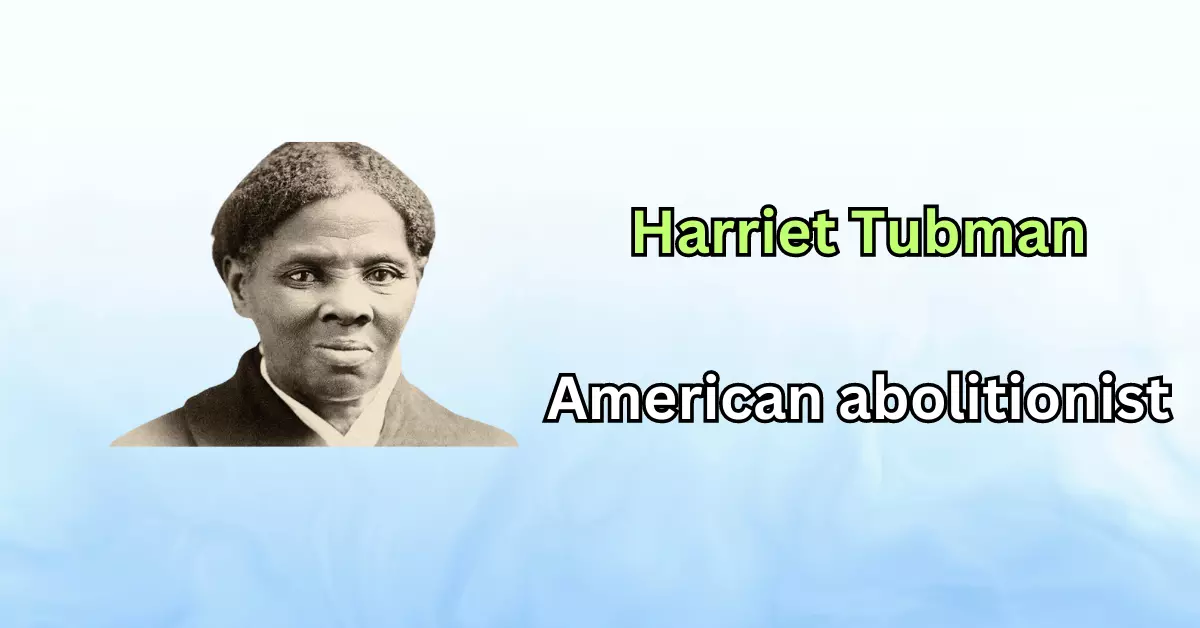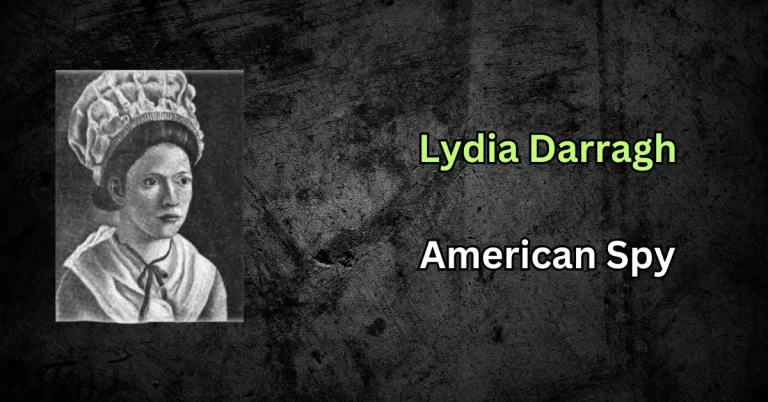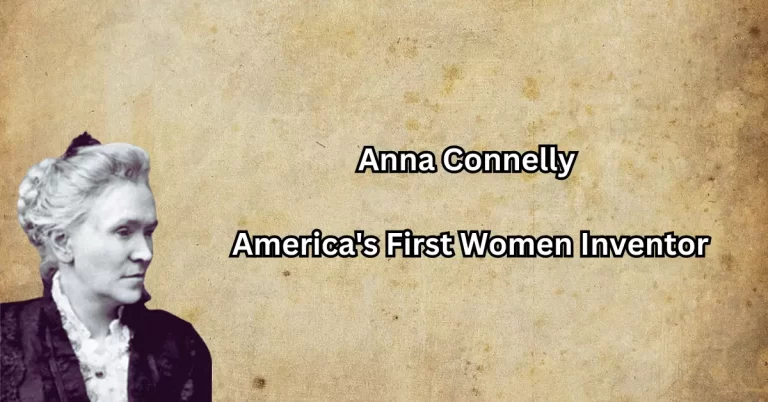When Was Harriet Tubman Born?
Harriet Tubman was born in March 1822. This iconic woman, often called the “Moses of her people,” left an indelible mark on American history. Born into the shackles of slavery, she rose above adversity to lead hundreds to freedom through the Underground Railroad. This article will shed light on her date of birth and various aspects of her remarkable life. Get ready to delve deep into the life of a woman who changed many lives.

Table of Contents
Quick Fact About Harriet Tubman
| Name: | Harriet Tubman (Araminta Ross) |
| Relationship Status: | Married |
| Nick Name: | Moses |
| Date of Birth: | March 1822 |
| Age: | Died at age 90 |
| Height: | 5’0’ |
| Net Worth: | Information not publicly available |
| Occupation: | Abolitionist | Nurse | Global Star |
| Citizenship: | American |
| Death Date: | March 10, 1913 |
Harriet Tubman’s Early Life
Harriet Tubman was born Araminta “Minty” Ross in early 1822 on the plantation of Anthony Thompson, south of Madison in Dorchester County, Maryland. She was one of nine children born to enslaved parents Benjamin Ross and Harriet “Rit” Green. Her mother was owned by Mary Pattison Brodess, and her father by Anthony Thompson.
As a child, Harriet Tubman was hired out by neighbors, where she worked as a field hand and house servant. As early as age five or six, she was expected to check muskrat traps in marshes and rivers. She endured harsh physical labor and suffered a traumatic head injury from an overseer as a teenager.
5 Facts You Might Not Know About Harriet Tubman
Beyond the widely acknowledged facts about Harriet Tubman’s role in the Underground Railroad and her bravery, countless lesser-known tidbits about her life showcase her multifaceted personality and accomplishments. Let’s uncover some of these intriguing details:
- Brain Surgery Without Anesthesia: Harriet suffered from seizures and splitting headaches due to a head injury inflicted by an overseer. Later in life, she decided to undergo brain surgery to alleviate the pain. Instead of anesthesia, she bit on a bullet, a technique soldiers used during amputations.
- Worked as a Cook in Florida: Before her escapades with the Underground Railroad, Harriet worked as a cook in the marshes of Florida. This experience may have given her survival skills and knowledge about navigating challenging terrains.
- Met Renowned Abolitionists: Harriet Tubman had encounters with leading abolitionists of her time, including Frederick Douglass and John Brown. John Brown, who revered Tubman, often called her “General Tubman.”
- She Was Illiterate: Despite her unmatched bravery and intelligence leading hundreds to freedom, Harriet Tubman never learned to read or write. Her life exemplifies how formal education isn’t the sole measure of one’s intelligence or capabilities.
- A Suffragist: Tubman’s fight wasn’t just against slavery. After the Civil War, she championed women’s right to vote, working alongside famous suffragists like Susan B. Anthony and Elizabeth Cady Stanton.
The Brutalities She Faced in Slavery
Harriet Tubman experienced severe physical and mental torment during her time in captivity. She was frequently hired out to other households, where she suffered beatings and mistreatment. A traumatic head injury caused by a weight thrown at her by an overseer left her with lifelong seizures, headaches, and narcoleptic episodes.
Escape from Slavery
In 1849, Harriet made her first bid for freedom. With the help of the Underground Railroad, a network of antislavery activists, and safe houses, she fled the plantation. Once she tasted liberty, Tubman was determined that others should also experience it. It ignited her mission to return multiple times to the South, risking her life to lead others to freedom.
Read More: When Was Steve Horstmeyer Born?
Prominence as an Abolitionist
Harriet Tubman became widely known as the most famous “conductor” of the Underground Railroad. She guided many friends and family members out of bondage, including her parents and siblings, and never lost a “passenger.” Her rescue missions deep into slave territory were challenging, but she displayed remarkable courage, ingenuity, and determination. She used disguises, clever ruses, and concealment in wagons and boats to avoid detection. She carried a revolver and was not afraid to use it to defend her charges.
Civil War Service
When the Civil War began in 1861, Tubman volunteered as a scout, spy, and nurse for the Union Army. She became the first woman to lead a raid when she guided Col. James Montgomery and his 2nd South Carolina Blacks in the Combahee River Raid. This June 1863 operation disrupted Confederate transportation routes and freed more than 700 enslaved people. Later that year, she went with Union troops to the South Carolina Sea Islands and helped newly liberated blacks transition to freedom. Harriet Tubman was the only woman to lead men into combat during the Civil War.
Postwar Activism
After the war, Tubman was an activist in the women’s suffrage movement. She regularly took care of elderly parents and other family members. Harriet Tubman struggled financially and did not receive a pension for her Union Army service for nearly 30 years. She married a Civil War veteran, Nelson Davis, in 1869. In 1886, she purchased land near Auburn, New York, to offer a home for aged and indigent African Americans. It became the Harriet Tubman Home for the Aged. She died there on March 10, 1913 at around age 90.
Legacy and Honors
Harriet Tubman was a deeply religious woman dedicated herself to fighting for liberty. She has become an icon of freedom and one of the most recognized heroes in American history. Her incredible story of courage and determination inspired countless people during her lifetime and for generations. Numerous sites, schools, parks, and structures now honor her groundbreaking role in the antislavery and women’s suffrage movements.
Related FAQs About Harriet Tubman
Conclusion:
Harriet Tubman demonstrated unparalleled heroism through her lifelong fight against slavery and injustice. Though born into bondage, she courageously escaped and risked everything to save others. She is one of history’s most iconic activists who never wavered in defending human rights. Her vision and leadership remain an inspiration today. Tubman’s unwavering faith and commitment to ending slavery helped guide countless souls to liberty and defined her place in history as a true American hero.







